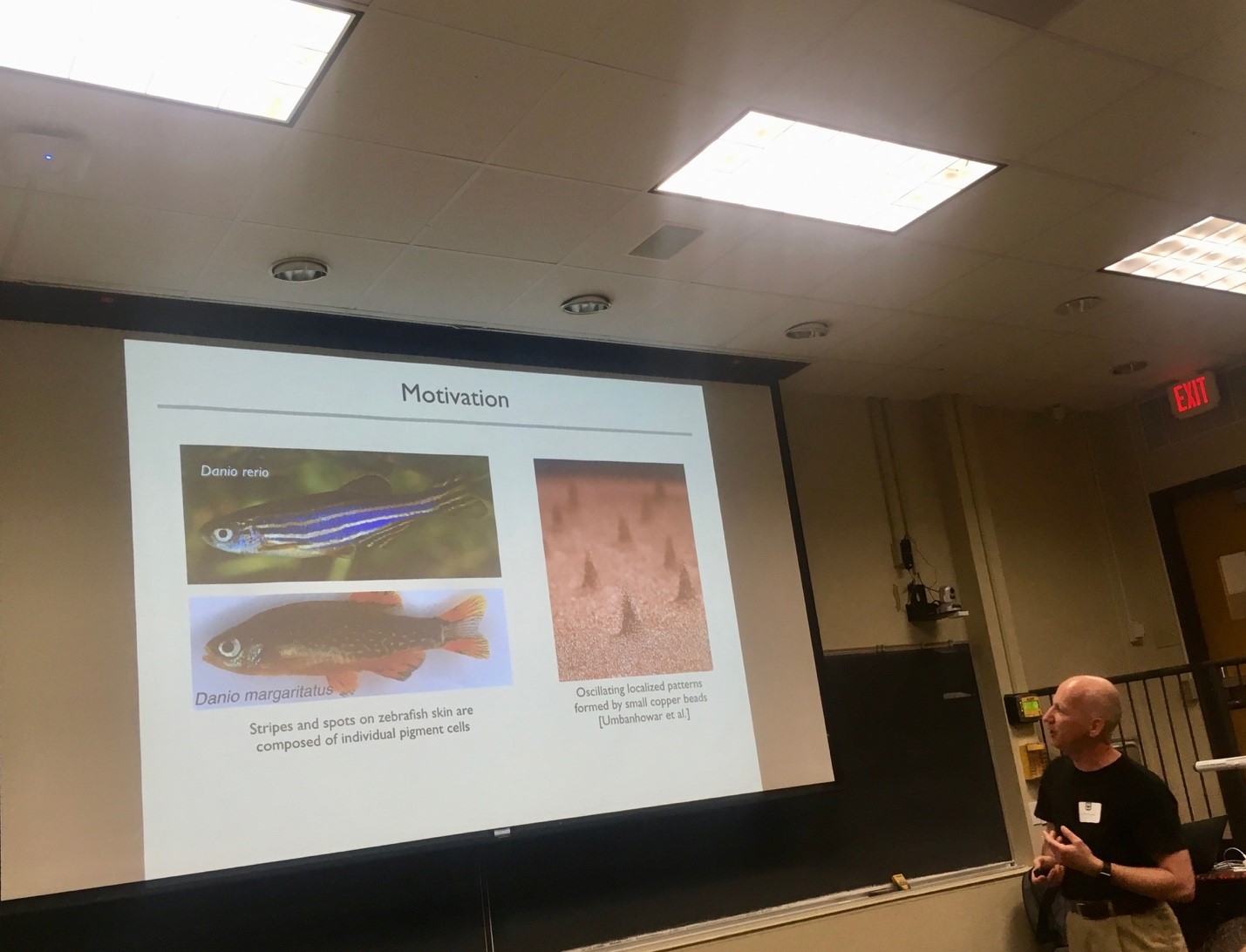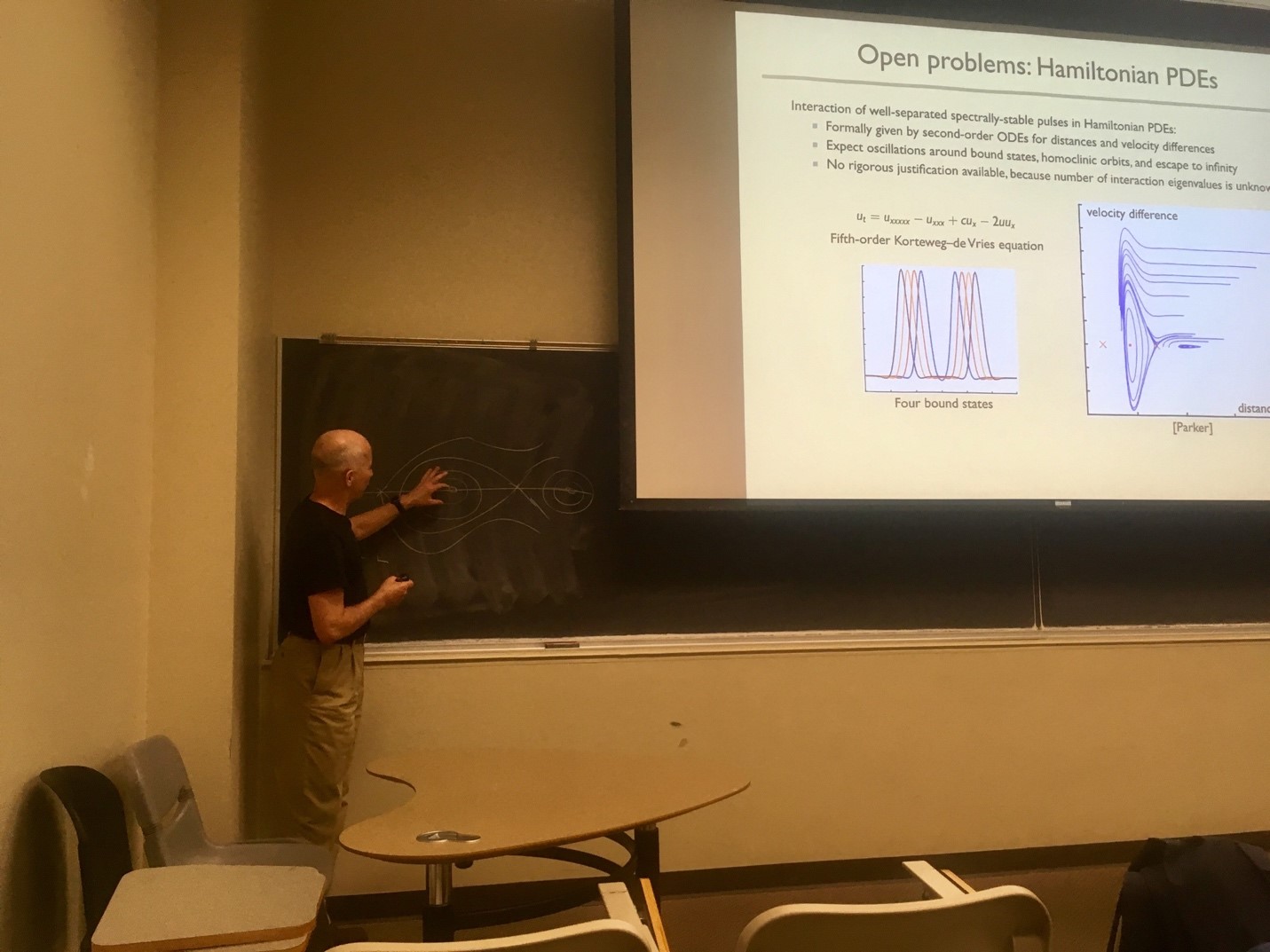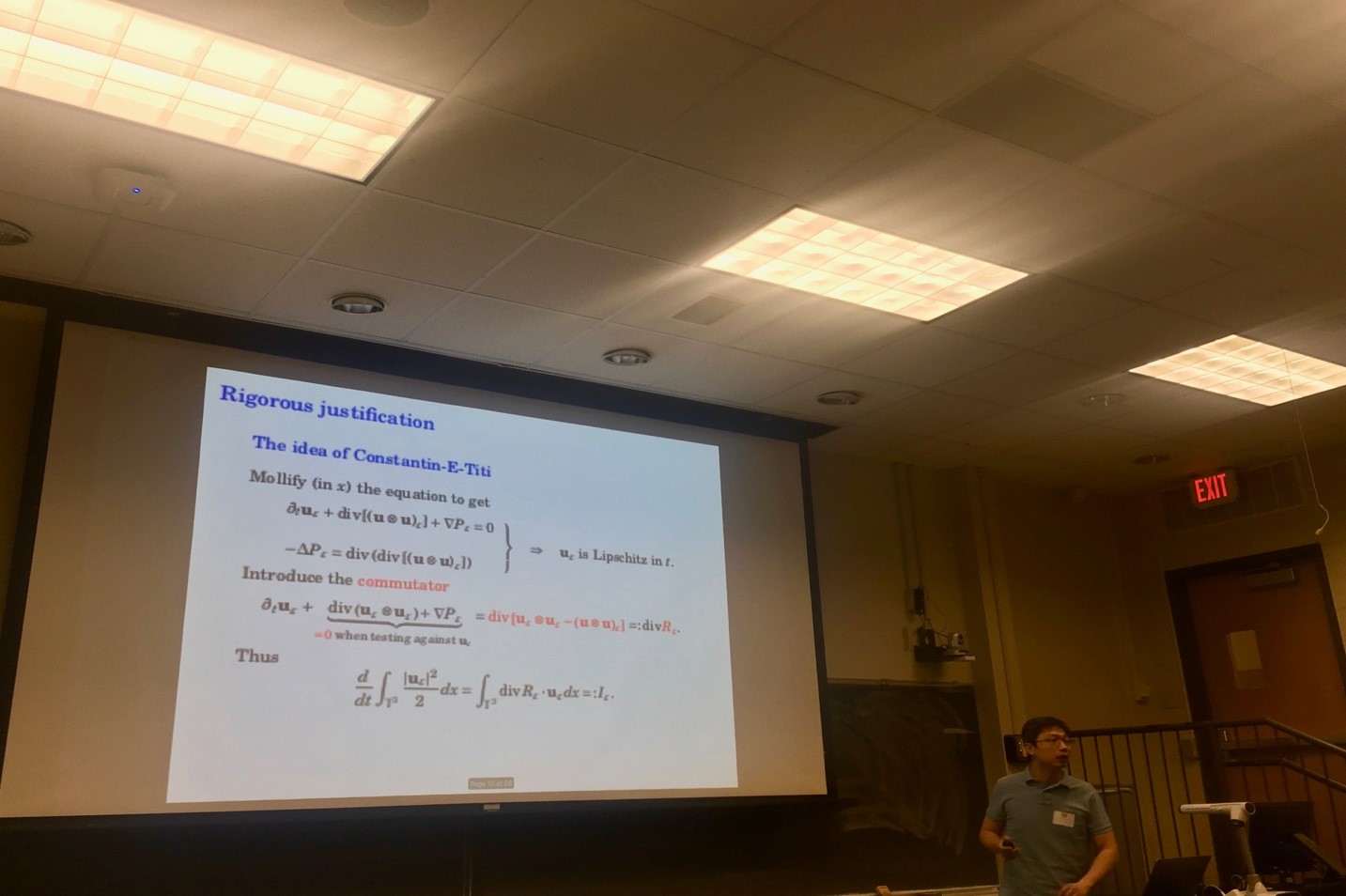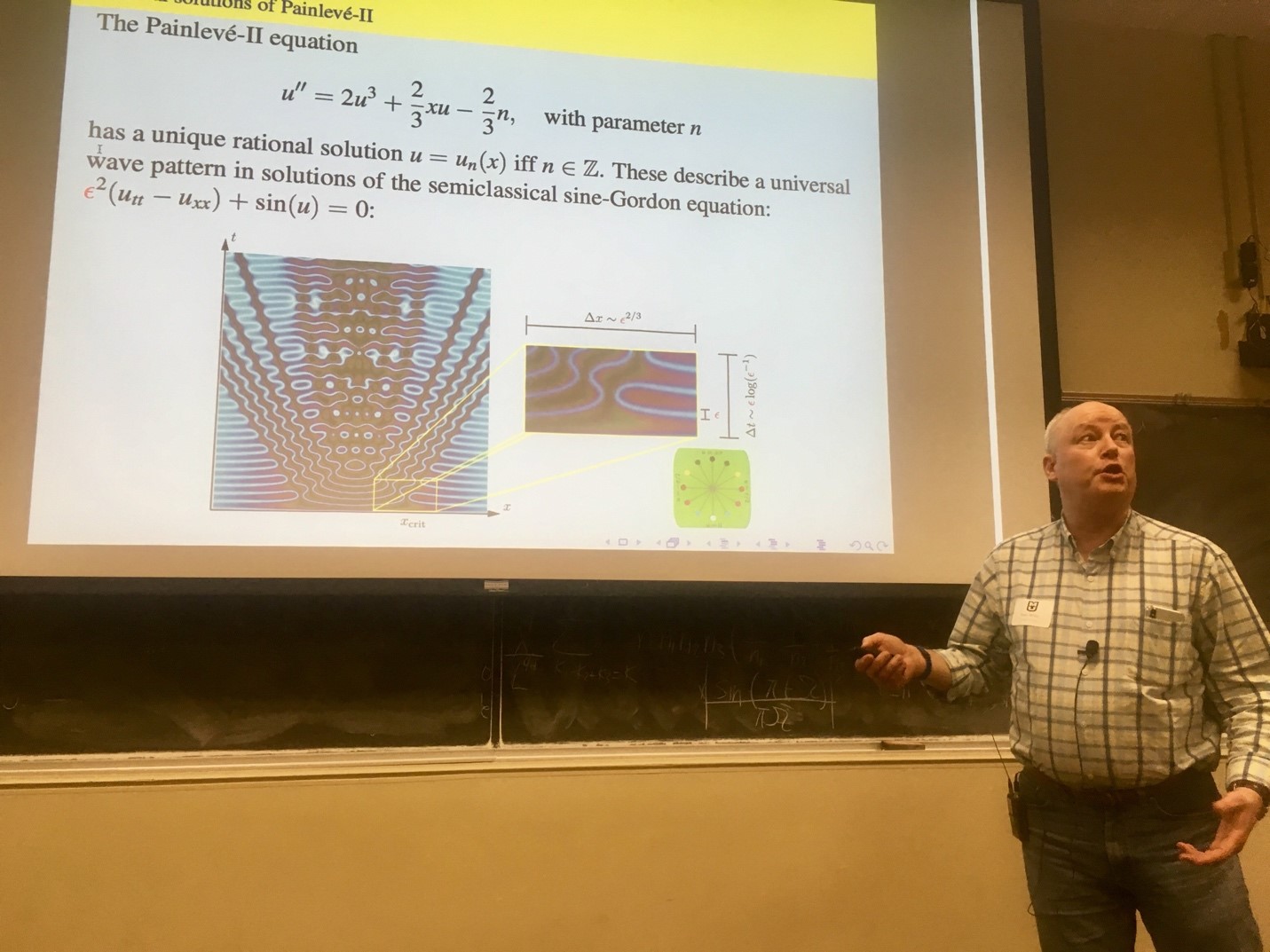The 2019 KUMUNU conference on PDE, Dynamical Systems, and Applications was held in Columbia, Missouri on April 27-28. It was hosted by the University of Missouri Mathematics Department and partially supported by the NSF. This is the fifth meeting in a series of regional conferences on the topics of differential equations and applications, which started with a conference in April 2015, in Lawrence, and was originally a joint endeavor between the University of Kansas and the University of Missouri. Soon after, University of Nebraska was added to the group and all local organizers–Mat Johnson (KU), Milena Stanislavova (KU), Yuri Latushkin (MU), Sam Walsh (MU) and George Avalos (NU) are pleased to be going strong and in the second round of conferences, thanks to the continuous support by NSF. There is strong indication that Iowa State University’s Mathematics Department will join the regional group to expand the geographical as well as mathematical range of the series. The conference in April 2019 in Columbia brought together faculty, postdocs, and graduate students from around the region and further afield for a stimulating two days of talks, posters, and discussion.

The conference featured a three-part minicourse from Bjorn Sandstede of Brown University, plenary talks from Rafael de la Llave from Georgia Tech and Dmitry Pelinovsky from McMaster University, as well as numerous invited talks, and a large poster session.

Impressively, Bjorn Sandstede started the conference off with the first of his three talks, discussing how localized and non-localized structures interact over time in adjacent spatial regions. Bjorn’s work on nonlinear dynamics and pattern formation in biological systems, fluid flow and chemical catalysis is outstanding and award winning and his talks are always informative and deeply clarifying. This minicourse format is new for the conference and a great idea of the local organizers. The talk aimed at developing the dynamical systems context to answer a number of interesting questions that come up in experiments. For example, how do small copper beads on a shaking plate come together to form large-scale structures? Or how does the pattern of stripes and spots on the skin of a zebrafish come to be? The answers have to do with spiral waves and their existence and stability, how these families of spirals interact and what does the spectrum of the linearizations predict about nonlinear dynamics. Proofs utilized dynamical systems and PDE techniques and open problems abound in this field, in particular, the planar spiral waves are not well understood.

Other highlights of the first day were the talks of Min Chen on the problem of energy balance for Leray–Hopf weak solutions of incompressible flows and Dmitry Pelinovsky’s comprehensive review of smooth and peaked waves in the reduced Ostrovsky equation and their stability. In the afternoon, Peter Miller’s talk on the rational solutions of the Painleve’s equation, although quite far from my own research interests, was fascinating and beautiful.
As a fellow KU PhD student and the only student presenting at the conference, Satbir Malhi’s talk, “Optimal Damping Which Gives Exponential Energy Decay on Unbounded Domains,” was also of interest to me. Satbir considered the damped Klein-Gordon equation in one spatial dimension and gave a necessary and sufficient condition on the non-negative continuous damping function to guarantee exponential energy decay for smooth enough initial data. As Satbir mentioned, this is a very difficult open problem in more than one spatial dimension.
The second day, I enjoyed a distinct astronomical theme. I particularly appreciated the talk of Zhiwu Lu from Georgia Tech regarding the stability of stellar models. Namely, he discussed non-rotating stars modeled by the Euler-Poisson system and proved a “turning-point principle,” that a certain form of stability for such stars is entirely determined by investigating the mass-radius curve. Rafael de la Llave, also from Georgia Tech, closed the invited talks with another connection to astronomy. He showed that under certain conditions, there exist orbits near Lagrange points (spatial coordinates where smaller bodies can maintain their positions relative to larger bodies) that gain a fixed amount of energy for all sufficiently small values of orbital eccentricity.

The large poster session was an exciting time for me, as a graduate student, to present my work on optimal estimates for semigroups generated by Hamiltonian linearizations, together with bounds for the location of the spectrum. Many other students and postdocs presented posters on problems they have been working on and were able to make personal connections with other conference attendees. The lively poster session was followed by a conference dinner at The Shack, located at the University of Missouri’s student center. The evening was filled with follow-up discussions about the posters and invited talks, and many new connections and collaborations were fostered during these exciting two days in Columbia. In summary, the conference certainly seemed to be a stimulating and enjoyable experience for all in attendance and I am looking forward to the next meeting of the series. Save the dates of April 25-26, 2020 on your calendar and look for more details about the sixth KUMUNU PDE meeting in Lincoln, Nebraska soon.